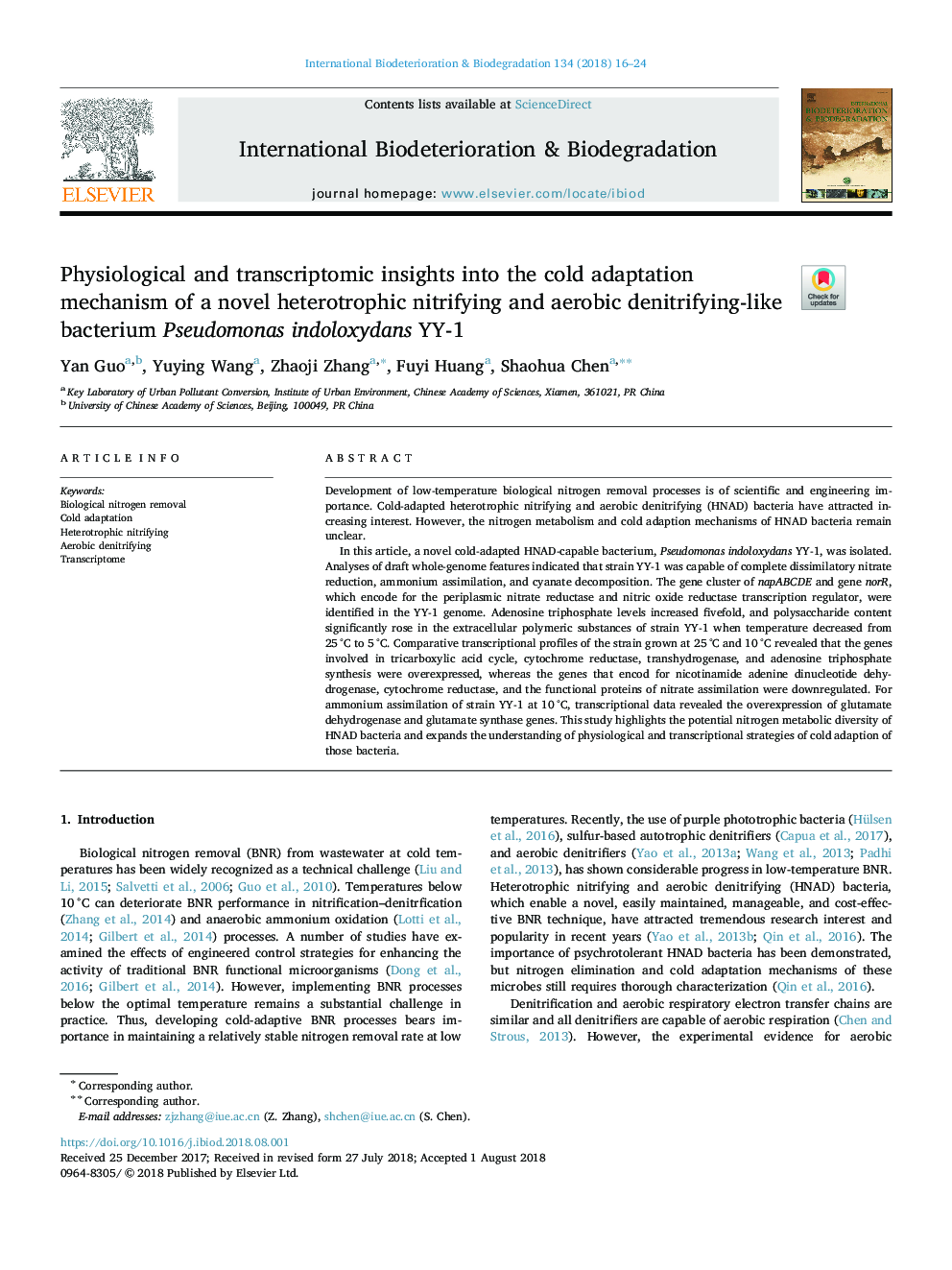| Article ID | Journal | Published Year | Pages | File Type |
|---|---|---|---|---|
| 8843666 | International Biodeterioration & Biodegradation | 2018 | 9 Pages |
Abstract
In this article, a novel cold-adapted HNAD-capable bacterium, Pseudomonas indoloxydans YY-1, was isolated. Analyses of draft whole-genome features indicated that strain YY-1 was capable of complete dissimilatory nitrate reduction, ammonium assimilation, and cyanate decomposition. The gene cluster of napABCDE and gene norR, which encode for the periplasmic nitrate reductase and nitric oxide reductase transcription regulator, were identified in the YY-1 genome. Adenosine triphosphate levels increased fivefold, and polysaccharide content significantly rose in the extracellular polymeric substances of strain YY-1 when temperature decreased from 25â¯Â°C to 5â¯Â°C. Comparative transcriptional profiles of the strain grown at 25â¯Â°C and 10â¯Â°C revealed that the genes involved in tricarboxylic acid cycle, cytochrome reductase, transhydrogenase, and adenosine triphosphate synthesis were overexpressed, whereas the genes that encod for nicotinamide adenine dinucleotide dehydrogenase, cytochrome reductase, and the functional proteins of nitrate assimilation were downregulated. For ammonium assimilation of strain YY-1 at 10â¯Â°C, transcriptional data revealed the overexpression of glutamate dehydrogenase and glutamate synthase genes. This study highlights the potential nitrogen metabolic diversity of HNAD bacteria and expands the understanding of physiological and transcriptional strategies of cold adaption of those bacteria.
Related Topics
Life Sciences
Environmental Science
Environmental Science (General)
Authors
Yan Guo, Yuying Wang, Zhaoji Zhang, Fuyi Huang, Shaohua Chen,
